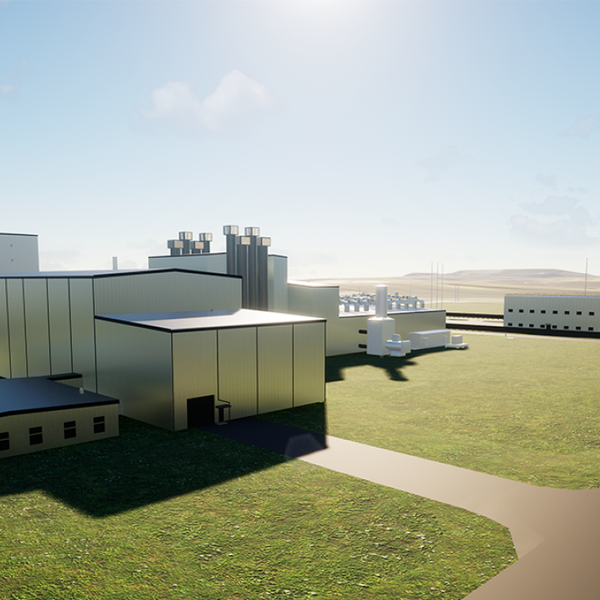Crisis at Fukushima Continues to Spiral With Hole in Radiation Barrier
Fence made of silt that sits in harbor has been breached, TEPCO admits, sparking further concern of ocean contamination

Fences made of earth and sand sit in the harbor next to the plant and were erected to help contain radioactive material from flowing into the ocean. They "are suspended from floats and anchored with weights on the seafloor," the Japan Times explains.
One of the fences that sits next to still-intact reactors five and six was found to be breached, sparking further worry about the amount of radioactive contamination heading into the ocean.
TEPCO has struggled to contain the "emergency without end" at Fukushima since the disaster began to unfold in March of 2011. An unsustainable contaminated water-storage system plagued by a series of leaks, soaring radiation levels in groundwater that head into the ocean, and high levels of radiation found in fish have catalyzed widespread resistance to nuclear power and raised international alarm.
As out of control as the situation seems, one expert has warned that it may actually be "much worse" than claimed. Also, long-time anti-nuclear activist Harvey Wasserman warned last week that a plan to "remove more than 1300 spent fuel rods from a badly damaged pool perched 100 feet in the air" risked putting the "hand of global nuclear disaster... painfully close to midnight."
___________________
An Urgent Message From Our Co-Founder
Dear Common Dreams reader, The U.S. is on a fast track to authoritarianism like nothing I've ever seen. Meanwhile, corporate news outlets are utterly capitulating to Trump, twisting their coverage to avoid drawing his ire while lining up to stuff cash in his pockets. That's why I believe that Common Dreams is doing the best and most consequential reporting that we've ever done. Our small but mighty team is a progressive reporting powerhouse, covering the news every day that the corporate media never will. Our mission has always been simple: To inform. To inspire. And to ignite change for the common good. Now here's the key piece that I want all our readers to understand: None of this would be possible without your financial support. That's not just some fundraising cliche. It's the absolute and literal truth. We don't accept corporate advertising and never will. We don't have a paywall because we don't think people should be blocked from critical news based on their ability to pay. Everything we do is funded by the donations of readers like you. Will you donate now to help power the nonprofit, independent reporting of Common Dreams? Thank you for being a vital member of our community. Together, we can keep independent journalism alive when it’s needed most. - Craig Brown, Co-founder |

Fences made of earth and sand sit in the harbor next to the plant and were erected to help contain radioactive material from flowing into the ocean. They "are suspended from floats and anchored with weights on the seafloor," the Japan Times explains.
One of the fences that sits next to still-intact reactors five and six was found to be breached, sparking further worry about the amount of radioactive contamination heading into the ocean.
TEPCO has struggled to contain the "emergency without end" at Fukushima since the disaster began to unfold in March of 2011. An unsustainable contaminated water-storage system plagued by a series of leaks, soaring radiation levels in groundwater that head into the ocean, and high levels of radiation found in fish have catalyzed widespread resistance to nuclear power and raised international alarm.
As out of control as the situation seems, one expert has warned that it may actually be "much worse" than claimed. Also, long-time anti-nuclear activist Harvey Wasserman warned last week that a plan to "remove more than 1300 spent fuel rods from a badly damaged pool perched 100 feet in the air" risked putting the "hand of global nuclear disaster... painfully close to midnight."
___________________

Fences made of earth and sand sit in the harbor next to the plant and were erected to help contain radioactive material from flowing into the ocean. They "are suspended from floats and anchored with weights on the seafloor," the Japan Times explains.
One of the fences that sits next to still-intact reactors five and six was found to be breached, sparking further worry about the amount of radioactive contamination heading into the ocean.
TEPCO has struggled to contain the "emergency without end" at Fukushima since the disaster began to unfold in March of 2011. An unsustainable contaminated water-storage system plagued by a series of leaks, soaring radiation levels in groundwater that head into the ocean, and high levels of radiation found in fish have catalyzed widespread resistance to nuclear power and raised international alarm.
As out of control as the situation seems, one expert has warned that it may actually be "much worse" than claimed. Also, long-time anti-nuclear activist Harvey Wasserman warned last week that a plan to "remove more than 1300 spent fuel rods from a badly damaged pool perched 100 feet in the air" risked putting the "hand of global nuclear disaster... painfully close to midnight."
___________________

